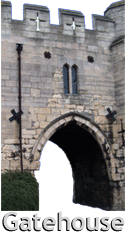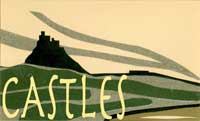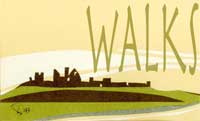|
|
||||||||||||||||||||||||||||||||||||||||||||||
|
Berwick upon Tweed Castle Location OS Landranger sheet 75 NT 993534 How to get there At Railway Station in Berwick upon Tweed In 1843 the North British railway demolished a considerable amount of the remains and built the present Railway station across the site. The castle is in the custody of English Heritage click on first picture for wide view |
|||||||||||||||||||||||||||||||||||||||||||||
 |
||||||||||||||||||||||||||||||||||||||||||||||
 |
 |
|||||||||||||||||||||||||||||||||||||||||||||
| The Constable's Tower | ||||||||||||||||||||||||||||||||||||||||||||||
 |
 |
|||||||||||||||||||||||||||||||||||||||||||||
 |
 |
 |
||||||||||||||||||||||||||||||||||||||||||||
 |
 |
 |
||||||||||||||||||||||||||||||||||||||||||||
 |
 |
|||||||||||||||||||||||||||||||||||||||||||||
 |
||||||||||||||||||||||||||||||||||||||||||||||
 |
||||||||||||||||||||||||||||||||||||||||||||||
 |
 |
|||||||||||||||||||||||||||||||||||||||||||||
| the Barmekin Tower | ||||||||||||||||||||||||||||||||||||||||||||||
 |
||||||||||||||||||||||||||||||||||||||||||||||
|
The white wall
|
||||||||||||||||||||||||||||||||||||||||||||||
 |
||||||||||||||||||||||||||||||||||||||||||||||
|
NT 993534/Traces/Access The standing remains of Berwick Castle which includes the west wall of the castle, the south east angle tower known as the Constable Tower and a length of curtain wall adjacent to it, as well as the flanking wall known as the White Wall. A castle at Berwick is first mentioned in documents dating to C12, although most of the remains which are visible today date from a re-modelling of the structure in the late C13 and subsequent centuries. When Edward I captured the town of Berwick from the Scots in 1296 the existing castle was strengthened. At this time an additional length of wall known as the White Wall was constructed. Large sections of this wall have been levelled and survive as foundations however the west wall and parts of the east wall of the castle survive as standing structures. Attached to the southern end of this wall is the south east angle tower, known as the Constable Tower. The upper courses of this tower are constructed of weathered ashlar blocks and are equipped with arrow slits suggesting a late C13 date. The lower courses of the tower are rougher and less regular and are thought to represent the base of an earlier C12 tower. At the northern end of this length of wall is a second tower standing to a height of six courses above the raised ground level. The west wall of the castle is also visible above ground standing to a maximum height of 6m and up to 4m thick. At its northern end are the remains of a semi-circular tower visible as rubble core 12m high. This tower is known as Barmekin Tower. At the southern end of the west wall there is a semi circular mid C16 gun turret. Attached to the south west angle of the castle, the White Wall descends the steep slopes of the Tweed where it terminated at a large wooden gate. A tower constructed at the same time on the site of its medieval predecessor survives well at the present edge of the river. |
||||||||||||||||||||||||||||||||||||||||||||||
 |
||||||||||||||||||||||||||||||||||||||||||||||


